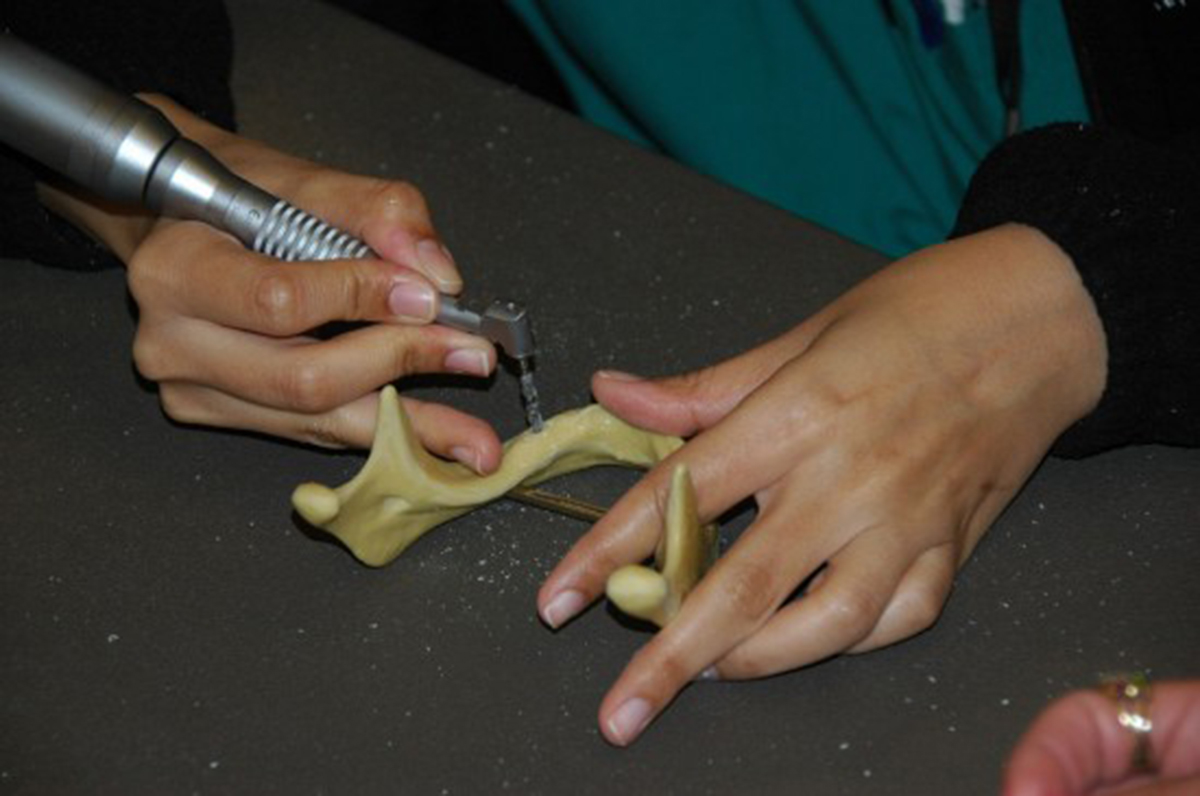Table of Contents
Porcelain fracture is a frequently observed complication with all dental crowns. Significantly higher rate of ceramic fractures was reported in a number of long-term studies. In one recent report, the rate of fracturing was 38% for screw retained crowns compared to only 4% for cemented crowns.

The problem of gum inflammation and other peri-implant health issues (bleeding, soreness etc.) can be of significant concern with the use of cement retained dental crowns. Many dentists believe that these problems can be reduced with the use of screw retained crowns.
This opinion, however, contradicts to the recent findings published by a group of dentists from Israel. They performed the so-called “split mouth” long-term evaluation of gingival health in patients who has both cemented and screw-retained crowns in the same positions on two different sides of the mouth.
Gradual loss of the jaw bone surrounding the implant is another potential problem that can eventually lead to the loss of implant. For this reason the measurement of bone loss is widely considered as an indication of the implant’s clinical performance. Again, the opinion of researchers seems to be divided here.
Many authors don’t find any differences in the clinical behavior of peri-implant bone between the two types of implant-supported crowns, while others report a smaller bone loss with cemented crowns. In the long term, the bone loss seems to be small for both types of crowns, though. Many researchers believe that this factor should not be decisive in the selection of prosthesis type.
Special situations
Some specific situations can indicate the use of either screw retained or cemented crowns. Screw retained restorations are preferred when technical or biological complications in the future are anticipated. This is the case, for example, with the large, full-arch reconstructions. These reconstructions require maintenance and repair more often, and are more prone to complications. The possibility to easily remove and adjust them does, therefore, provide a clear advantage.
The same applies to the patients who are expected to lose more teeth in the future. The possible need to modify the framework of prostheses in the future should be catered for from the beginning of treatment.
In those cases when patients are prone to gingival problems such as inflammations and gum recession the screw retained crowns are also advantageous. They can be easily removed to address the underlying problem of soft tissues and modified to adapt for a new situation, when necessary.
Read More: Impact Of Poor Dental Health
Conclusion
When it comes to choosing between the screw retained and cemented crowns, two major questions should be answered:
1. Is the probability of future complications low enough to go ahead with permanently cementing a given prosthesis?
2. Does the retrievability of more expensive screw retained prosthesis represent the value for money in a given case?
Eventually, the choice of a particular type of restoration lies in the hands of practitioner and is dictated by many factors. Depending on the particular features of each individual case, both types of restoration have to be considered.
A number of special situations, however, favor the use of one of the systems.
- Chee, W. and Jivraj, S. (2006) Screw versus cemented implant supported restorations. British Dental Journal 201 (8), 501-507
- de Brandao, M.L. et al. (2013) Peri-implant bone loss in cement- and screw-retained prostheses: systematic review and meta-analysis. J Clin Periodontol 40, 287-295
- Gervais, M.J. and Wilson, P.R. (2007) A rationale for retrievability of fixed, implant-supported prostheses: a complication-based analysis. Int J Prosthodont 20, 13-24
- Lee, A. et al. (2010) Screw- versus cement-retained implant restorations: current concepts. Implant Dentistry 19 (1), 8-15
- Nissan, J. et al. (2011) Long-term outcome of cemented versus screw-retained implant supported partial restorations. Int J Oral Maxillofac Implants 26, 1102-1107
- Sailer, I. et al. (2012) Cemented and screw-retained implant reconstructions: a systemic review of the survival and complication rates. Clin Oral Implants Res 23 (suppl. 6), 163-201
- Shadid, R and Sadaqa, N. (2012) A comparison between screw- and cement-retained implant prostheses: a literature review. J Oral Implantol 38, 298-307
- Sherif, S. et al. (2011) Clinician- and patient-reported long-term evaluation of screw- and cement-retained implant restorations: a 5-year prospective study. Clin Oral Invest 15, 993-999
- Strong, S.M. (2008) What’s your choice: cement- or screw-retained implant restorations? Gen Dent 56, 15-18
- Vigolo, P. et al. (2012) Cemented versus screw-retained implant-supported single-tooth crowns: a 10-year randomised controlled trial. Eur J Oral Implantol 5, 355-364
- Weber, H.P. and Sukotjo, C (2007) Does the type of implant prosthesis affect outcomes in the partially edentulous patient? Int J Oral Maxillofac Implants 22 (suppl), 140-172.
- Photo by shutterstock.com
- Photo courtesy of dental ben by Flickr : www.flickr.com/photos/dentalben/203428180/


Your thoughts on this